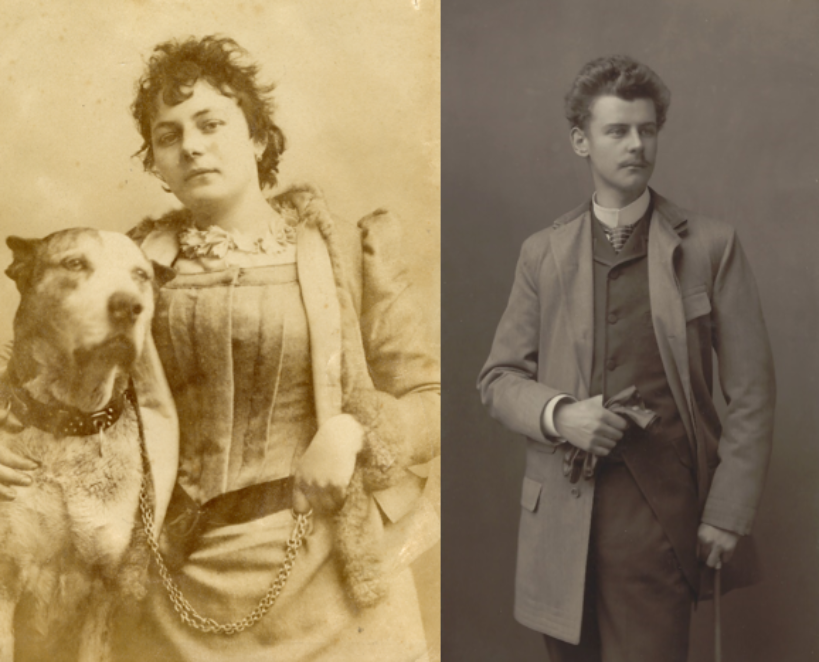The contrasts between the two are a good place to start. Unlike Baertsoen, De Hem came from relatively modest milieu, and could not rely on the same wealth and cultural network that Baertsoen’s family in Ghent provided for him. Working in the more provincial city of Ypres, De Hem established her name in official art circles, and throughout her career she remained a consistent fixture at major salon exhibitions in Belgium and abroad. Baertsoen was active in more diverse and progressive exhibition communities. Artistically, though, the main difference between the two was their choice of subject matter: De Hem excelled at figures, still lifes and interiors in her paintings and pastel drawings, while Baertsoen was regarded as an expert in representing the urban landscape.
But alongside these considerable differences, their lives and work were also similar in many respects. Their biographies reveal that both were passionate about music and that both earned attention in their local newspapers for their musical talents. Both De Hem and Baertsoen also received private tuition outside of the academies. At a time when there was no question of a woman being admitted to an academy, De Hem was taught by her live-in brother-in-law, Théodore Ceriez; Baertsoen studied with Gustave Den Duyts and Jean Delvin.
Both artists also made their debut in their teenage years, De Hem in Spa in 1885 (with an additional, smaller individual exhibition late in the year in the town hall of Ypres), and Baertsoen in Antwerp in 1882. Interestingly, both appeared at the Paris Salon for the first time in 1888.
Neither was fully satisfied by the recognition they earned at the major exhibitions in Belgium and France: their ambitions went further. They both continued their studies in Paris, De Hem beginning with the celebrated painter Alfred Stevens before attending the renowned Académie Julian (1889-91) and Baertsoen training in the studios of Henri Gervex and Alfred Roll (1893).
Correspondingly, both artists found both success and a large following among international collectors, albeit in different milieus. Separately, each selected an Art Nouveau architect from Brussels to design a spacious studio and townhouse. De Hem had Ernest Blérot create hers in Vorst, while Baertsoen hired Georges Hobé for his in Ghent. Photographs reveal spaces that were commodious for working, but that also reflected the bourgeois characteristics of the times and circles in which they lived.
Finally, in yet another noteworthy parallel, barely two years after her debut De Hem donated one of her characteristic still life works to the MSK in 1887 - a canny example of a young artist seizing an opportunity for what we would now call ‘product placement’. For his part, Baertsoen sold his painting ‘Snowy morning in Flanders. Rope-makers on the ramparts’ to the museum in 1895, and between 1903 and 1907 donated a series of prints, including one of his most successful, ‘The Kromboomsloot in Amsterdam (II)’. At the turn of the year between 1906 and 1907, his typical solidarity towards his fellow artists was evident when he refused the museum committee’s request to purchase the prints, instead simply donating them. This gesture left the museum with funds available to purchase two etchings by Armand Rassenfosse, with whom Baertsoen had recently struck up a friendship.
The MSK’s Albert Baertsoen exhibition has now ended. However, we sincerely recommend a visit to Ypres, particularly for the Yper Museum’s exhibition ‘Louise/Edith’ (on show until 12 March 2023). For information, visit www.ypermuseum.be/louise-edith



